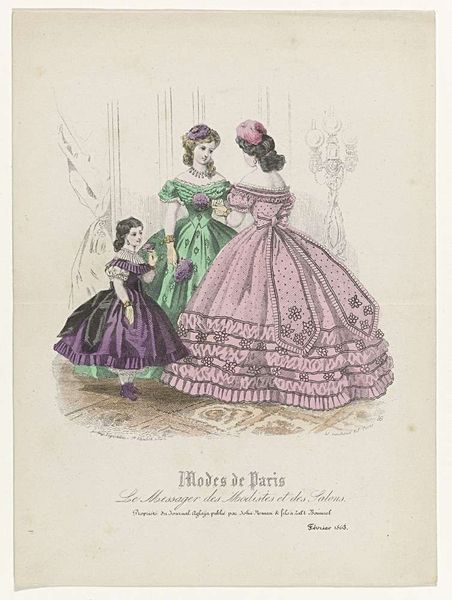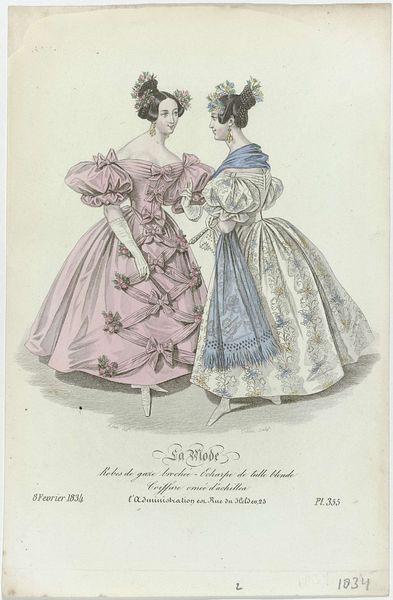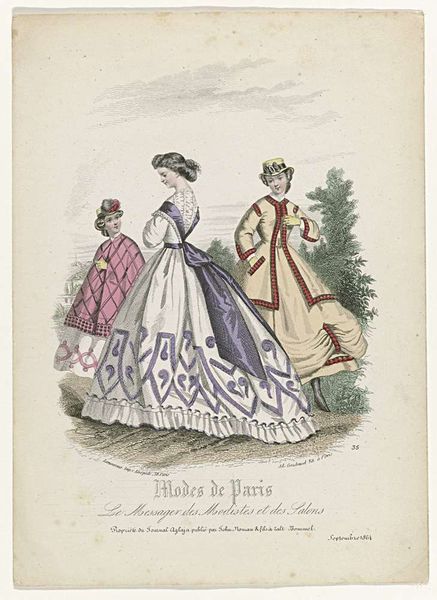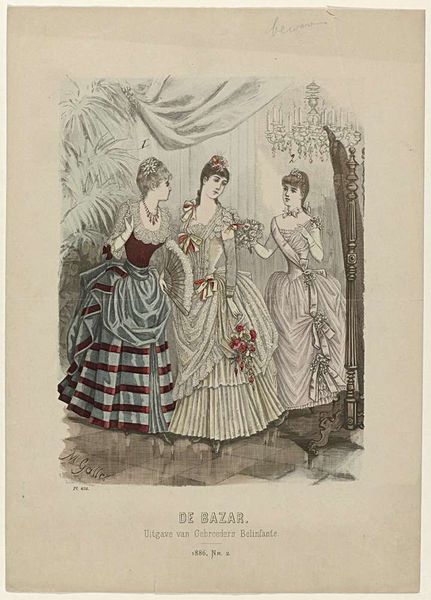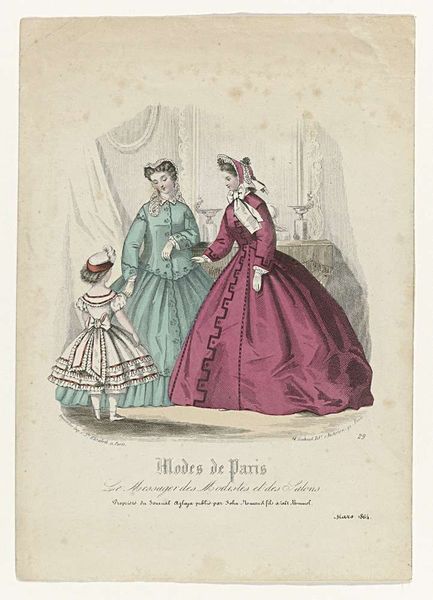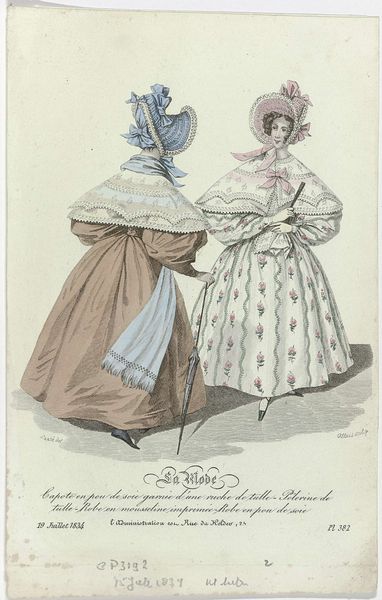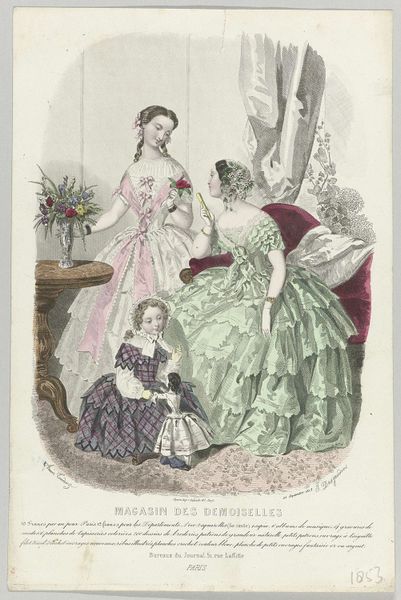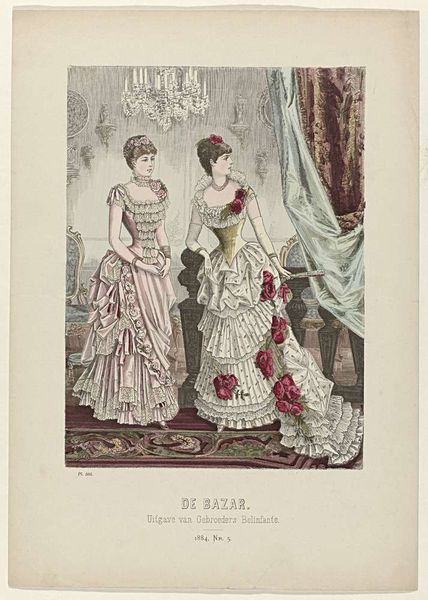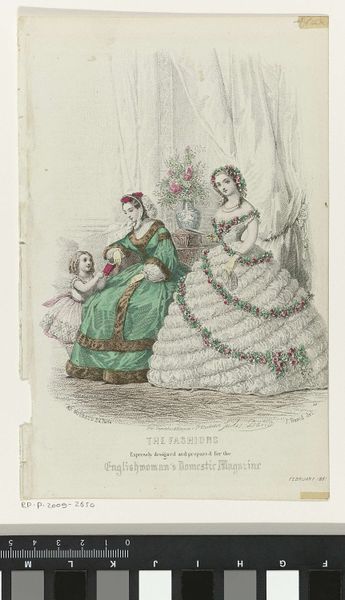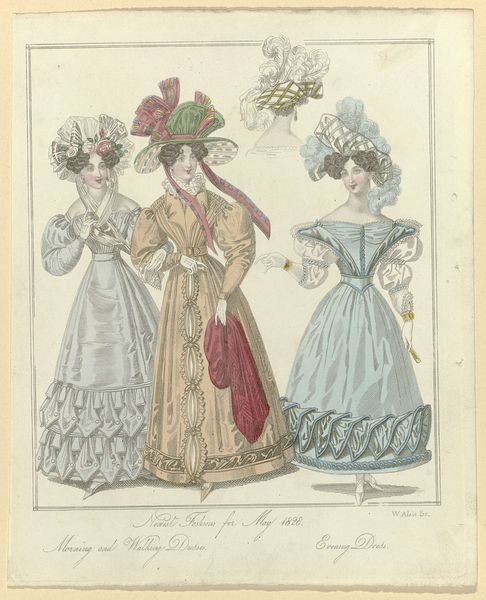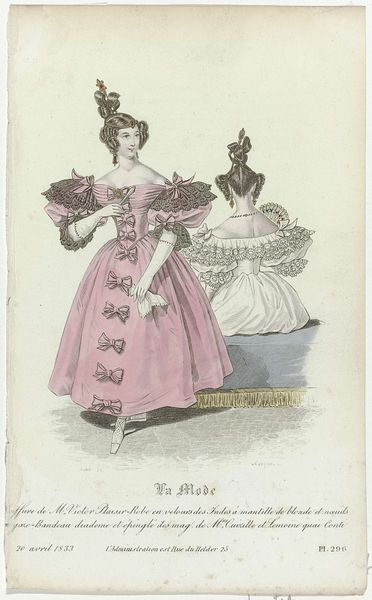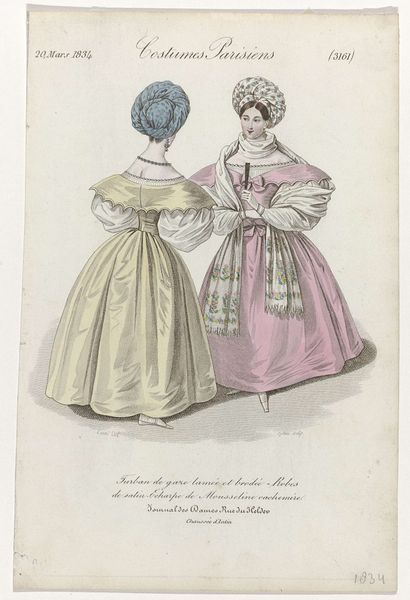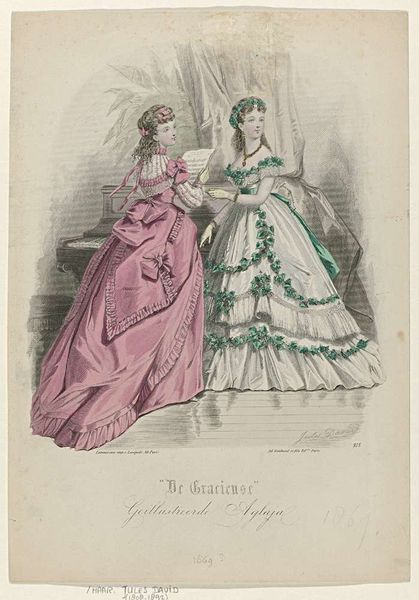
Le Messager des Modistes et des Salons, Modes de Paris, Journal Aglaja, janvier 1864, No. 27 1864
0:00
0:00
Dimensions: height 200 mm, width 143 mm
Copyright: Rijks Museum: Open Domain
Curator: Looking at "Le Messager des Modistes et des Salons, Modes de Paris, Journal Aglaja, janvier 1864, No. 27", created in 1864, we see a fascinating example of a hand-colored lithograph offering insight into Parisian fashion. Editor: The delicate lines and muted colors give it an almost ethereal feel, like a watercolor dream. It’s quite charming. Curator: Indeed. The lithographic process, combined with hand-coloring, suggests a particular mode of production and consumption during the mid-19th century. This print functioned as a promotional item, tied to the booming garment industry and salon culture of Paris. These images shaped desires, dictating style, labor conditions for textile workers, and the societal expectations of women, as related to fashion. Editor: From a formal standpoint, the composition leads the eye in a zig-zag pattern across the three figures. I appreciate the Rococo influence—that playful asymmetry, the curves, and the floral motifs adorning the dresses. And, look at the way the artist employs color, subtly contrasting the dresses’ pinks, greens, and yellows, guiding our gaze. The texture created from the linework suggests the fine materiality of these fabrics as well. Curator: The publication itself reflects evolving print culture and distribution networks. Journals such as 'Journal Aglaja' reached specific audiences—likely upper-middle class women— reinforcing emerging notions of modernity. Editor: But what of the dresses themselves? The elaborate silhouettes, those exaggerated skirts and dainty waistlines – they present such a clear statement. What message were these women being invited to inhabit, sartorially? Curator: It’s also interesting to consider how these images are produced, distributed, and then eventually discarded, revealing shifts in aesthetic standards, evolving market demands, and the sheer volume of disposable printed materials. This lithograph, preserved across time, embodies layers of information on artistic conventions, fashion, and production methods, as integral to its visual appeal. Editor: You're right. It speaks volumes, beyond just frills and fabrics. Looking closer has certainly enriched my appreciation.
Comments
No comments
Be the first to comment and join the conversation on the ultimate creative platform.
